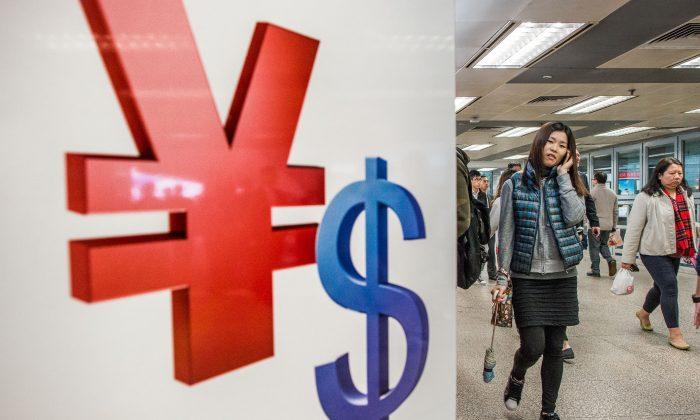During its rise to become the second largest economy, China employed a very simple mercantilist strategy: undervalue your currency and grow through exports. In 2015, it seems China is being beaten by its own game.
In the trade numbers reported on April 13, exports fell 14.6 percent over the year in March and imports crashed 12.3 percent. China’s trade surplus dwindled to a measly 18.16 billion yuan, or $2.91 billion, where it can be as high as $61 billion in good months.
Yes, a decrease in trade is not unusual following the Chinese New Year (Feb. 18 in 2015), however, this collapse is one of a kind.
“This is the worst performance, exports and imports combined, since late 2009,” wrote Minggao Shen, Citigroup’s head of China research.
So what happened? China has benefited from pegging its currency to the dollar and undervaluing it in terms of trade. As a result, it could run a massive trade surplus and rack up a huge pile of foreign currency reserves in exchange.
This worked well throughout the last decade until the United States, Europe, and Japan took a page out of China’s playbook and started to devalue their currencies. Over five years, the euro lost 28 percent against the yuan; the yen lost 29 percent, and even the dollar—up against every other currency over the last year—lost 9 percent.

This means that Chinese products become less competitive in international markets and this trend has been reflected in trade data since the end of last year. It’s certainly not beneficial for Chinese exports that Japan and Europe have been teetering on the brink of recession for the better part of that period too.
The good news is that China can now buy more things cheaper from abroad. So even if the total volume of imports stays the same, the dollar (or yuan) volume will decrease because of cheaper prices.
The drop in imports, however, also reflects slowing demand from the Chinese economy as a whole, whose growth slowed to 7.3 percent in 2014, the lowest in decades.
source: tradingeconomics.com
For the United States, even the globally stronger dollar is working out. Imports from China decreased by $7 billion, or 20 percent from January to February 2015, according to U.S. data. Exports to China, however, only decreased $1 billion, or 11 percent.





